November 2nd, 2024
7minute read
In the aftermath of 9/11, Uncle Sam unlimbered most everything he had.
The end result was a decades-long fight that continues to this day.
Coalition troops dug Taliban, al-Qaeda and ISIS fighters out of their holes and caves by any means necessary.
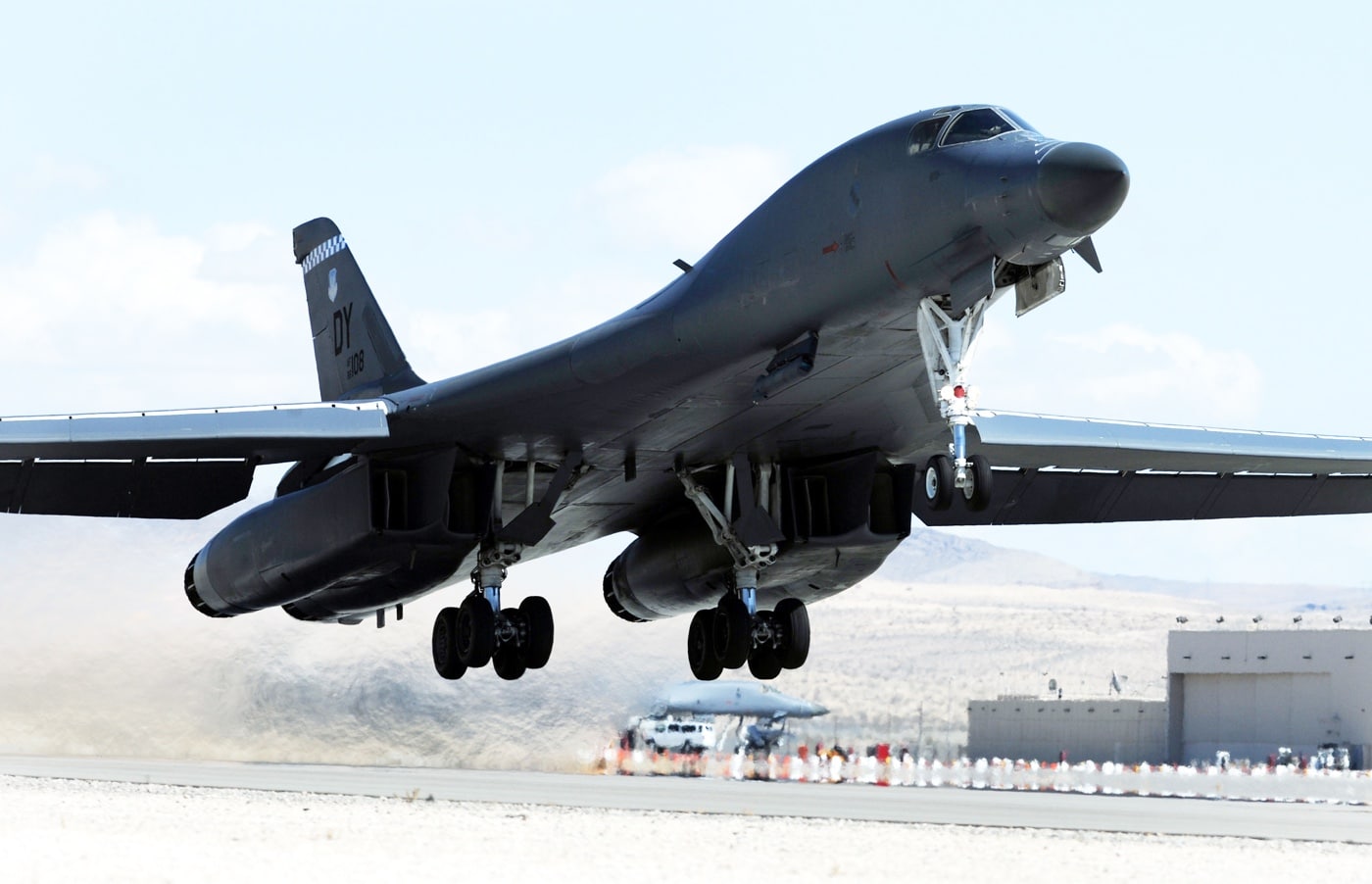
A B-1B Lancer assigned to 7th Operations Group at Dyess Air Force Base, Texas, departs for a training mission in 2010. Image: Airman 1st Class Brett Clashman/U.S. Air Force
Sometimes, that meant going in on foot in the dark with night vision systems and small arms.
The B-1B strategic bomber was originally crafted for deep penetration nuclear attacks into the heart of Russia.
In military parlance, the B-1 is universally referred to as the Bone.
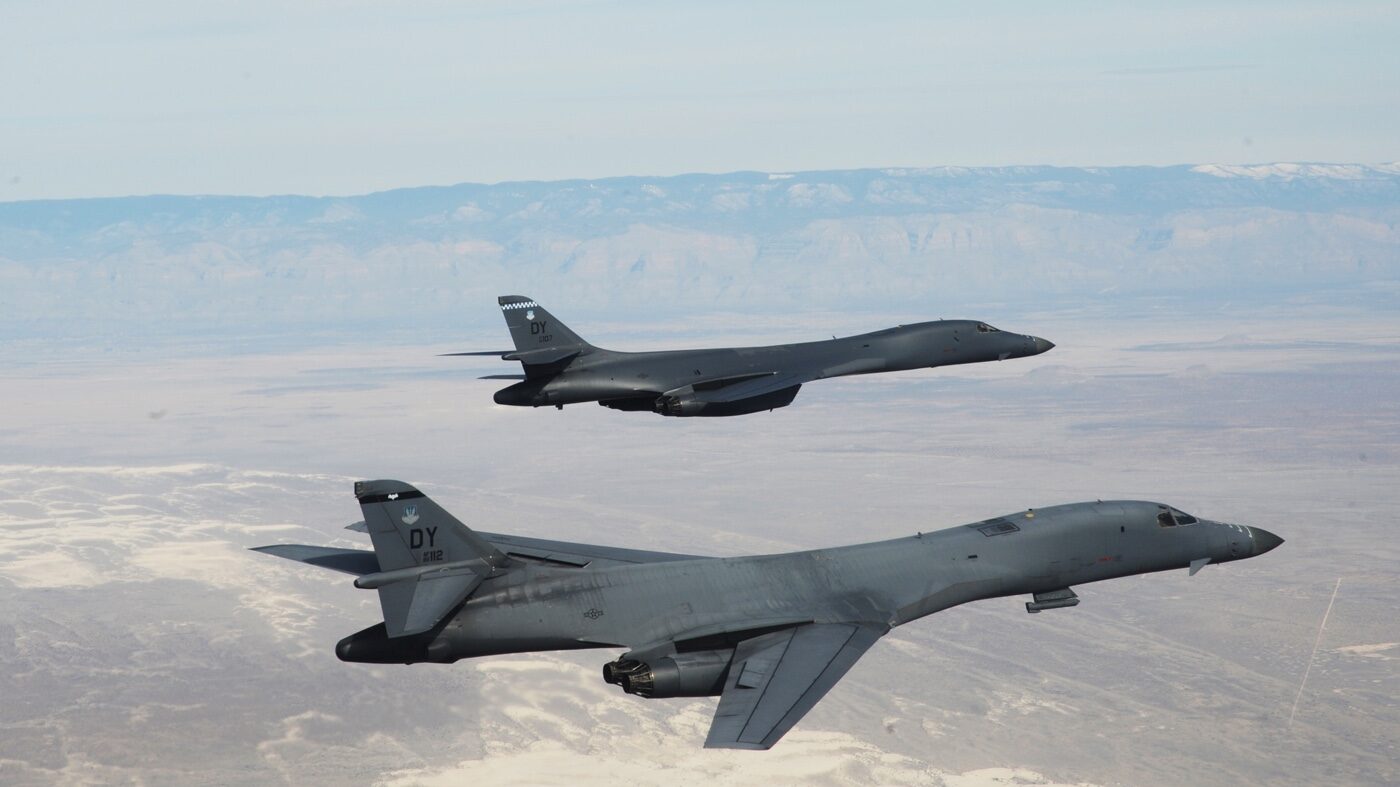
A two-ship formation of B-1B Lancers fly in formation over New Mexico during a training mission Feb. 24, 2010. Image: Master Sgt. Kevin J. Gruenwald/U.S. Air Force
Thats an obvious contraction of the designation, B-One.
Sporting variable-geometry wings and four powerful turbofan engines, the original B-1A was intentionally fast.
At high altitudes, this plane could cruise at Mach 2.2.
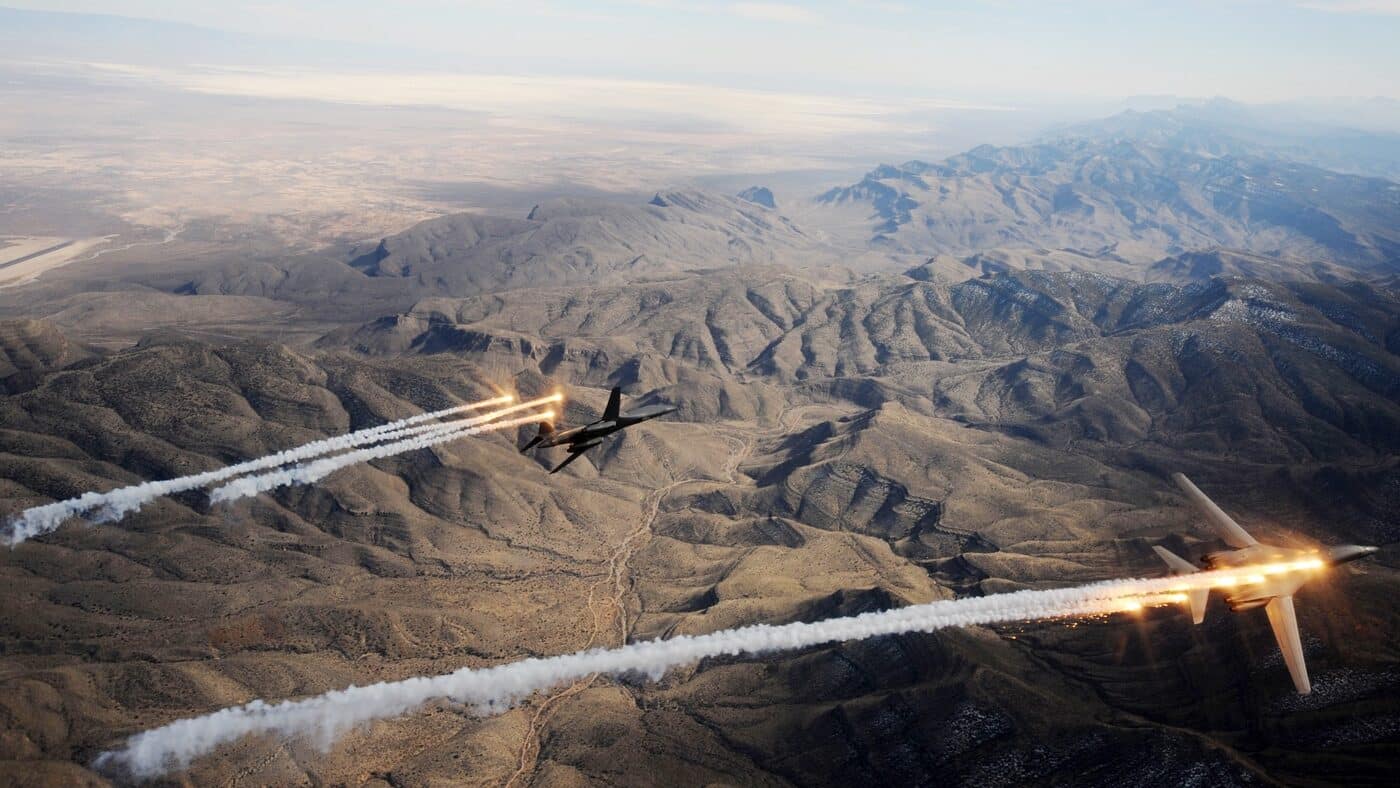
B-1B Lancers release chaff and flares while maneuvering during a training mission in 2010. Master Sgt. Kevin J. Gruenwald/U.S. Air Force
The original plan was for the B-1A to replace both theB-58 Hustlerand theB-52 Stratofortress.
The B-1A did what it was supposed to do, but it was also insanely expensive.
The B-52 was a time-proven platform, and theB-2 Spirit stealth bomberwas looming on the horizon.
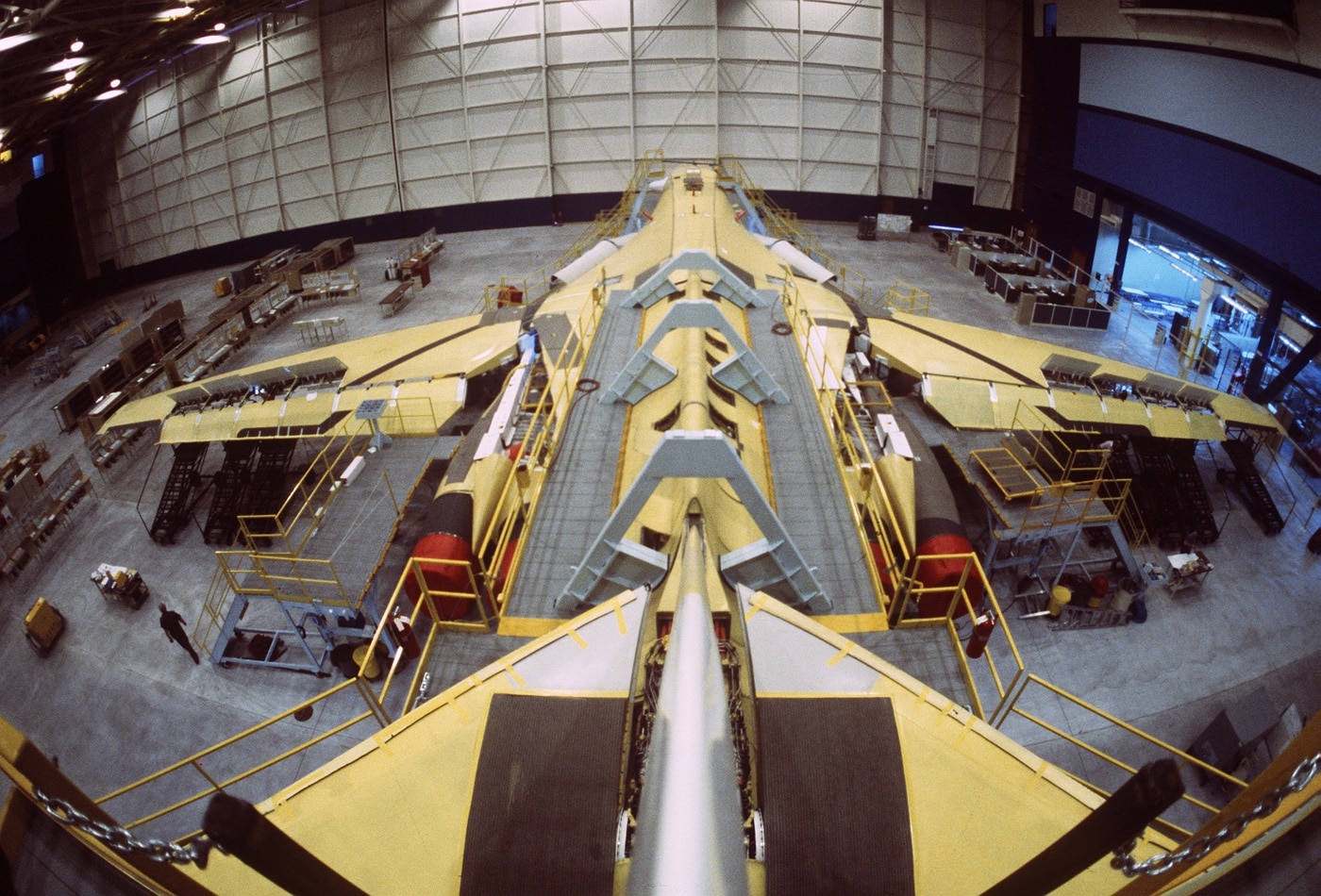
A rear view of a B-1B aircraft in final stages of construction during October 18, 1985. Image: Staff Sgt. T.L. Viada/U.S. Air Force
It seemed that the B-1A was superfluous.
Like all radically advanced military technology, the stealth tech driving the B-2 proceeded by fits and starts.
In the early 1980s, Ronald Reagan wisely decided to spend the Warsaw Pact into submission.
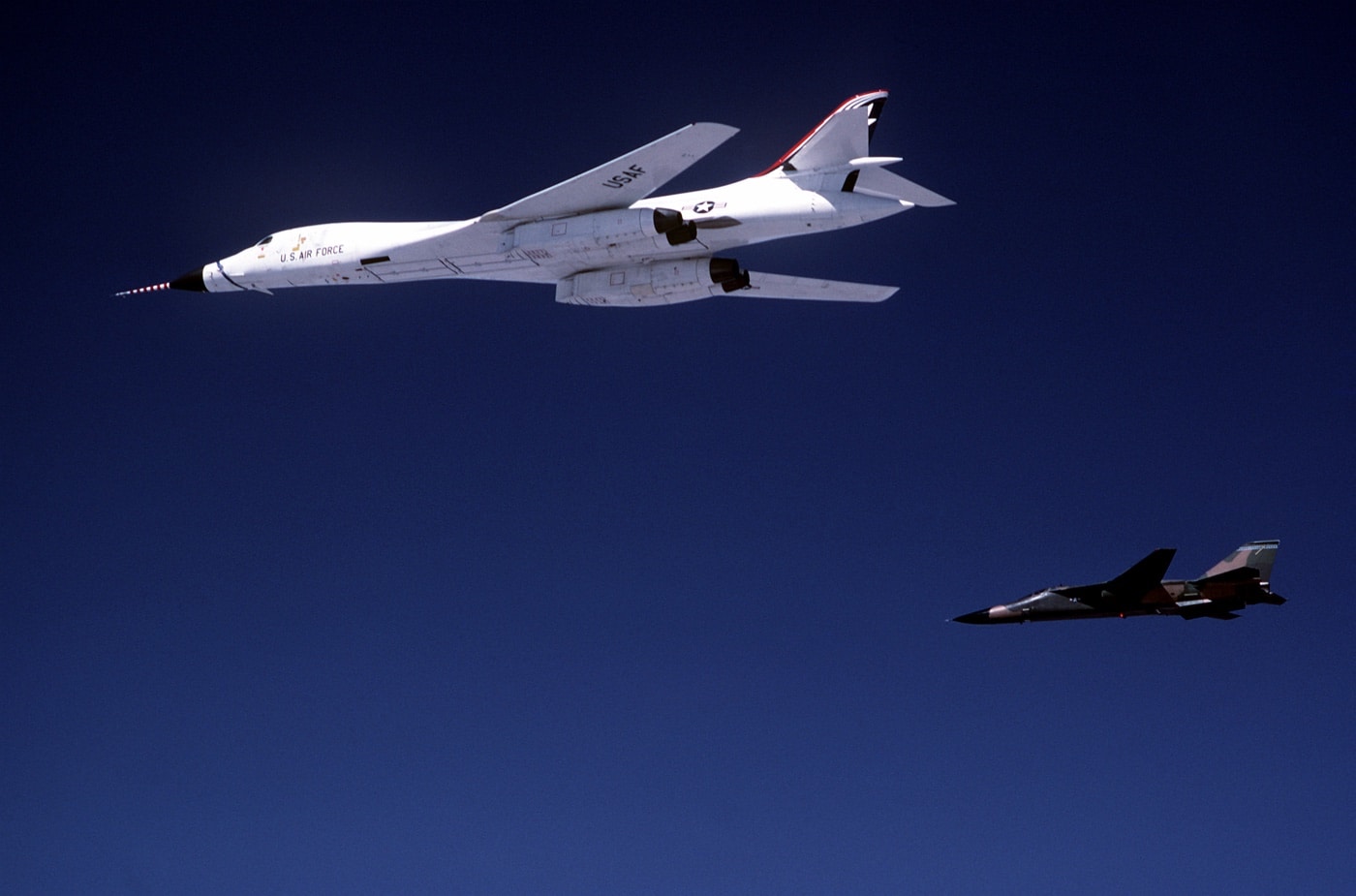
An air-to-air left side view of a B-1B Lancer bomber with a General Dynamics F-111 Aardvark attack aircraft following behind. Image: Tech Sgt. William B. Belcher/U.S. Air Force
This redesigned monster turned out to be a simply magnificent bomb truck.
The redesigned airframe was optimized for low-level penetration missions and upgraded to carry more fuel and weapons.
An even 100 of the big bombers were delivered by 1988.
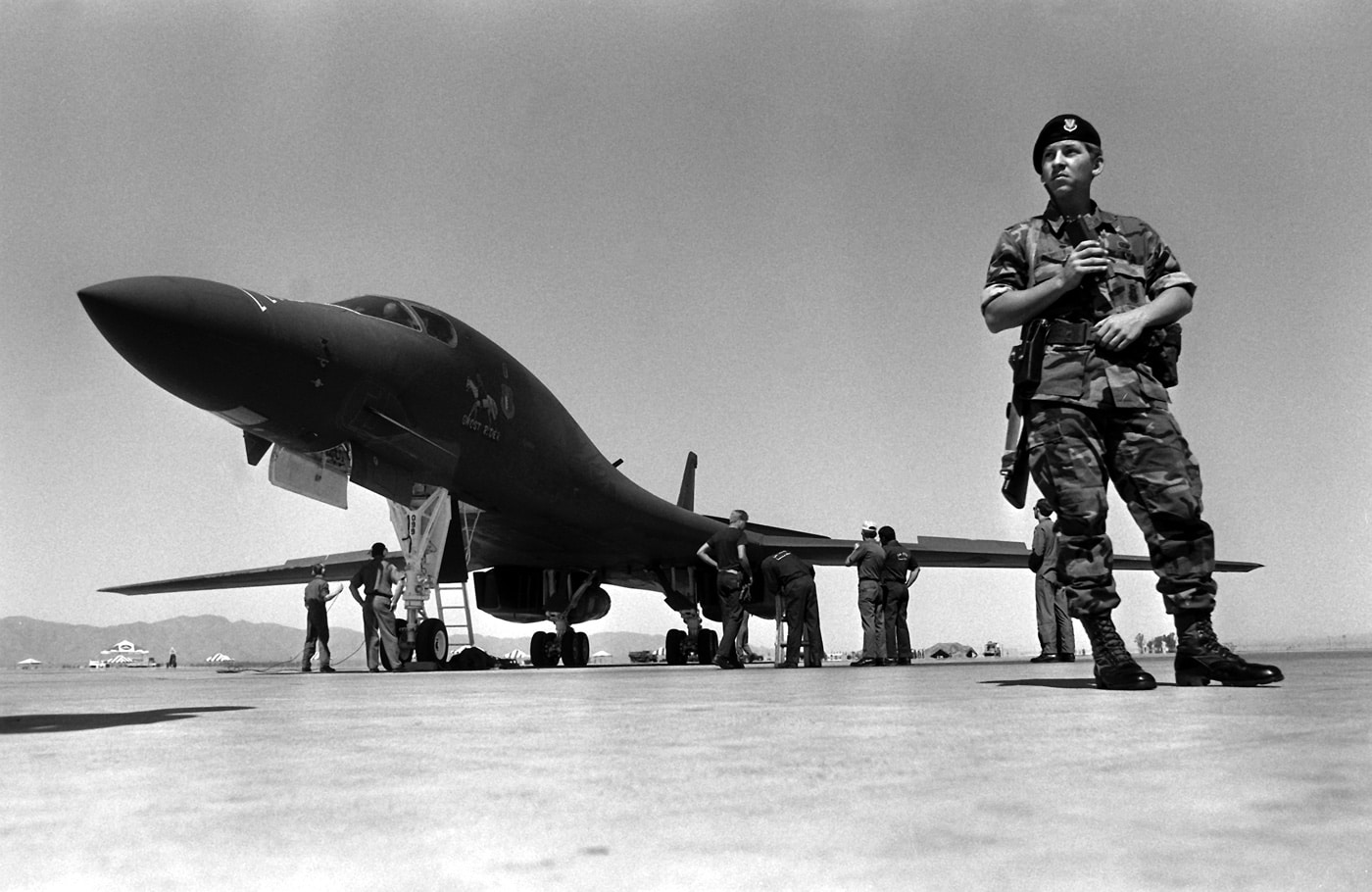
At Luke Air Force Base, an Air Force security policeman stands guard near a B-1B aircraft as maintenance technicians check over the aircraft. Image: Airman First Class Robert Person/U.S. Air Force
Changing Times
The B-1Bs maximum takeoff weight is a whopping 477,000 pounds.
The planes blended wing body airframe is both graceful and menacing.
Serpentine air intakes and fixed intake ramps decrease the planes radar cross-section at the expense of speed.
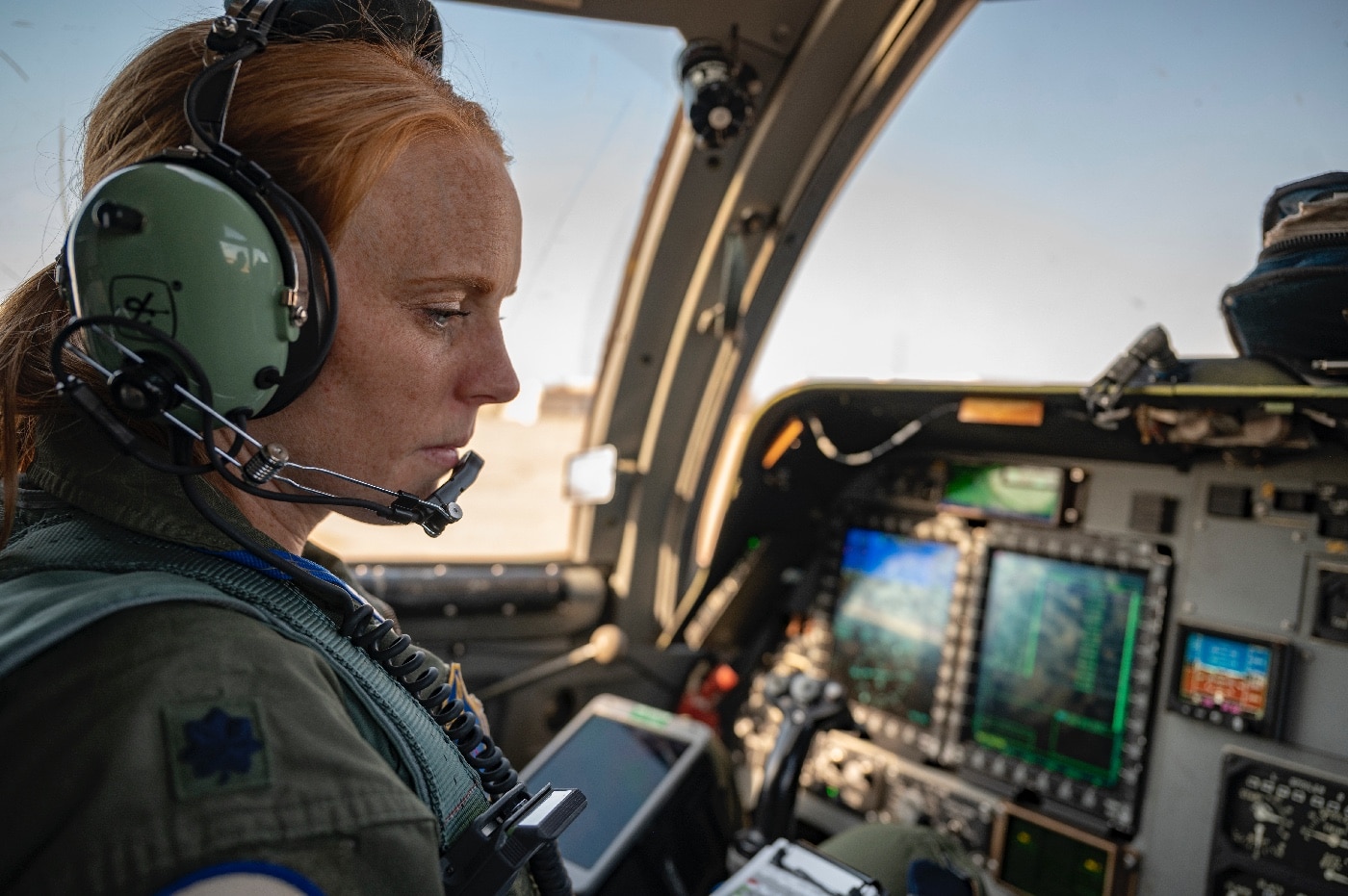
Lt. Col. Kristen Jenkins, 28th Bomb Squadron commander, performs preflight duties in a B-1B Lancer prior to a training mission. Image: Senior Airman Reilly McGuire/U.S. Air Force
Vanes incorporated into the B-1B intake ducts deflect radar returns from the massive engine compressor blades.
The end result is an airplane that is much stealthier than was its predecessor.
The B-1Bs radar cross section is roughly one-fiftieth that of the B-52.
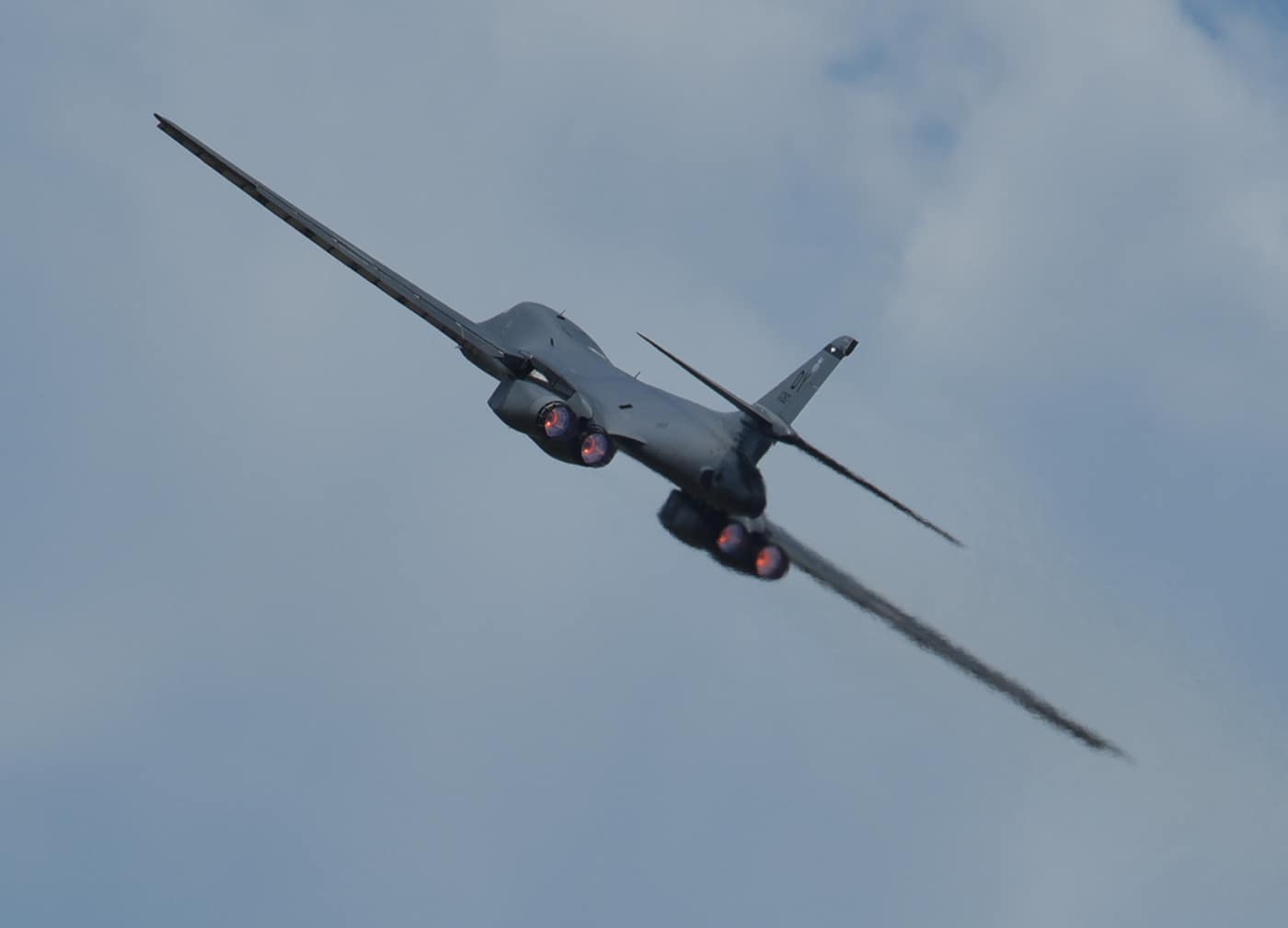
A U.S. Air Force B-1B Lancer assigned to the 9th Bomb Squadron takes off from Dyess Air Force Base, Texas. Image: Airman River Bruce/U.S. Air Force
That makes the Bone the equivalent on radar to a single-seat fighter plane.
The basic GE F101-102 engines used in the B-1B are well-proven.
This same basic powerplant core drove theF-14 Tomcatas well as later versions of the F-16.
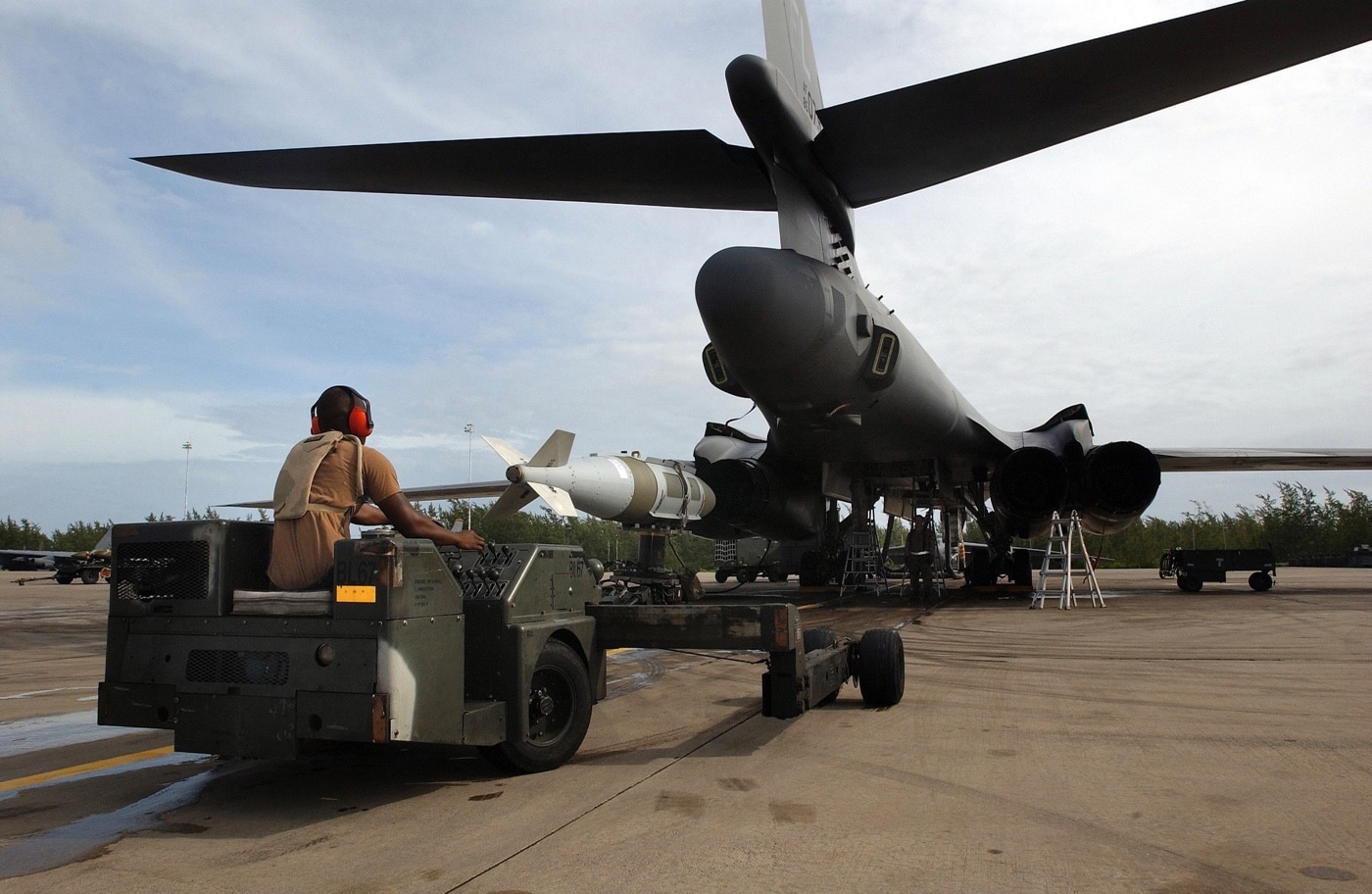
A BLU-109 2,000-pound bomb with a Joint Direct Attack Munition attachment is loaded into a B-1 Lancer bomber during Operation Enduring Freedom. Image: Staff Sgt. Shane Cuomo/U.S. Air Force
This engine also served as the foundation for the non-afterburning GE F118 used on the B-2 Spirit.
The B-1B has been continuously upgraded since its introduction.
Eventually, the Bone was retired from its strategic nuclear responsibilities and devoted solely to conventional ground attack.
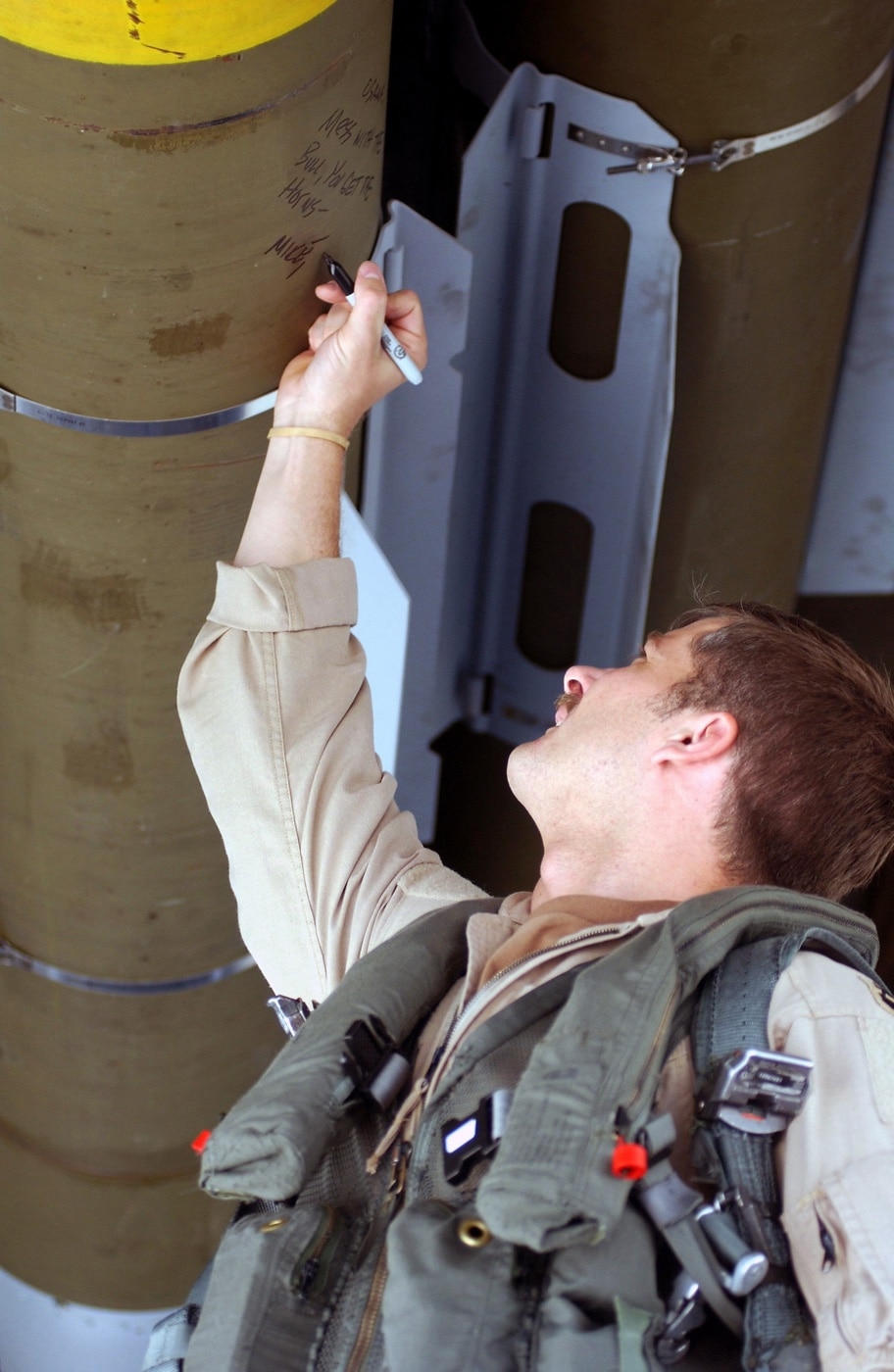
A B-1B Lancer pilot writes a message on a BLU-109 2,000 pound bomb prior to a November 2001 mission against al Qaeda in Afghanistan. Image: Staff Sgt. Shane Cuomo/U.S. Air Force
As a result, the latest versions of the B-1B can carry lots and lots of conventional guided bombs.
The latest upgrades will also allow the B-1B to carry as many as 31 AGM-183 ARRW hypersonic missiles.
By combining both internal stores and external hardpoints, the B-1B remains the worlds premiere high-volume munitions dispenser.
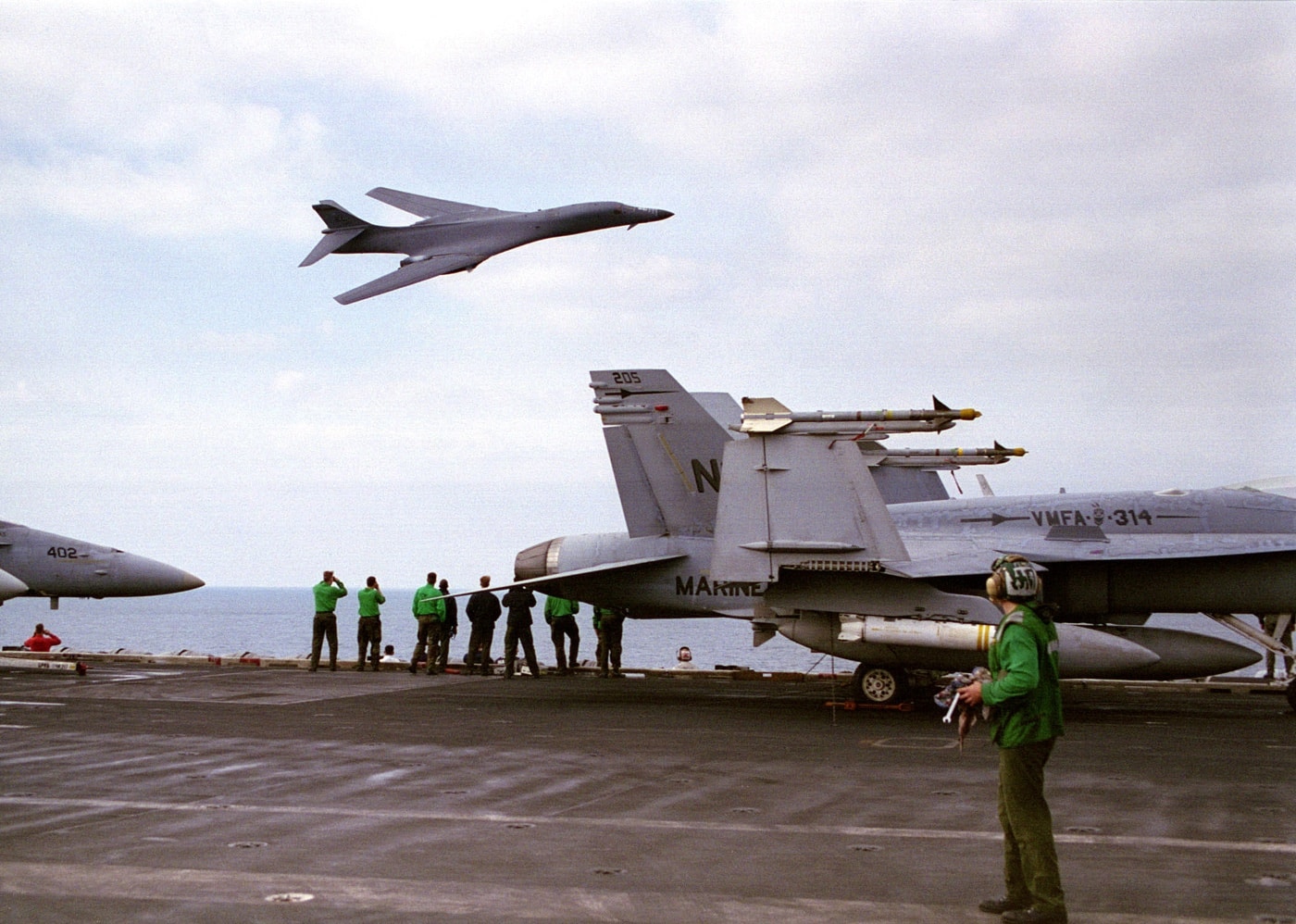
On Christmas day of 1997, a U.S. Air Force B-1 Lancer flies by the aircraft carrier USSNimitz(CVN 68) in the Persian Gulf in support of Operation Southern Watch. Image: PH2 Christopher G. Ware/U.S. Navy
Combat Stats
The numbers tell an amazing story.
That included an extraordinary 3,900 JDAM bombs.
Despite such a grueling op-tempo, the Bone maintained a 79% mission capable rate.
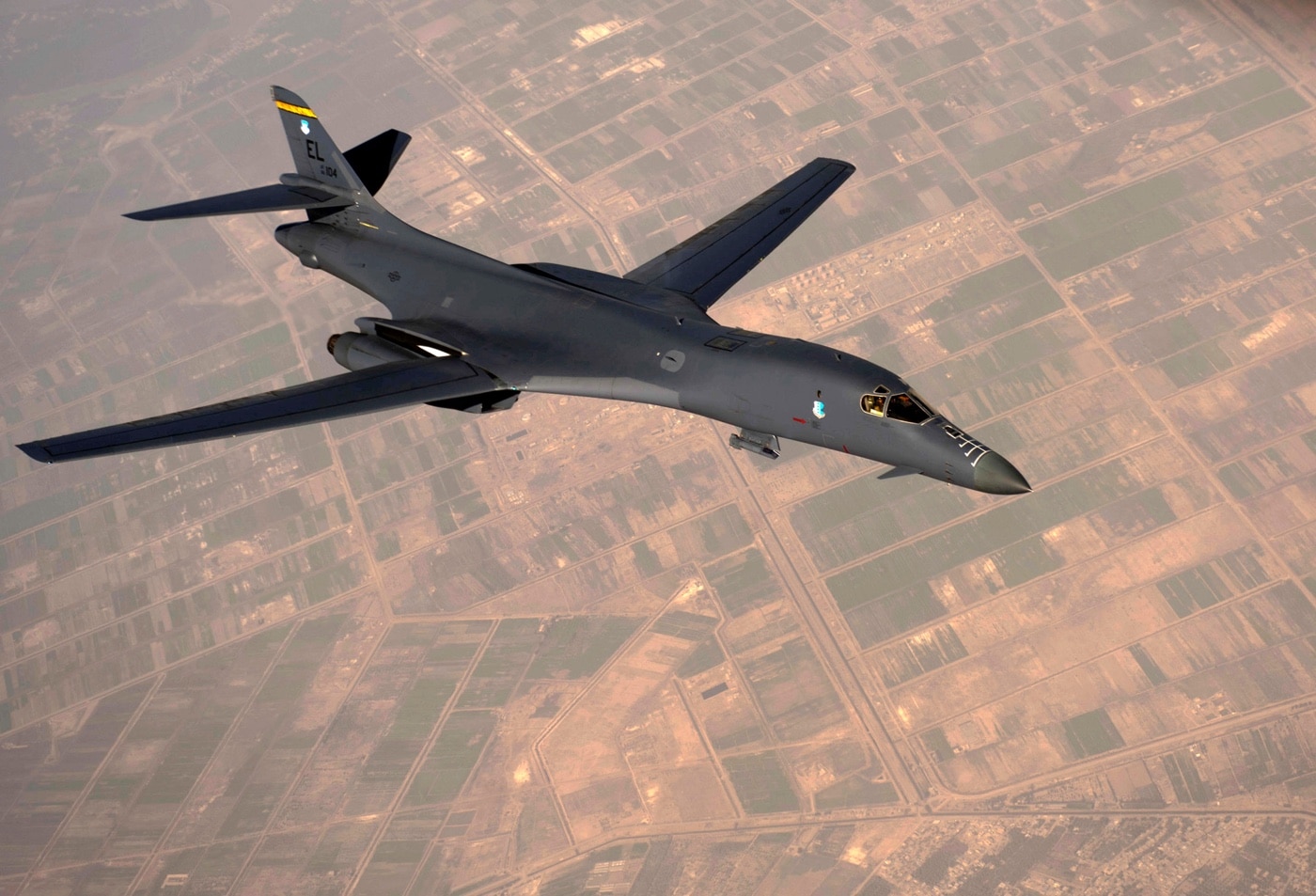
During February 2011, a B-1B Lancer flies above Iraq in support of Operation New Dawn. Image: Master Sgt. Adrian Cadiz/U.S. Air Force
Incorporation of the Common Strategic Rotary Launcher allows the B-1B to carry 48 JDAMs.
I have actually seen a B-1B drop a full load of 84 Mk62 gravity bombs in sequence.
Trust me, thats enough to make a guy get religion.
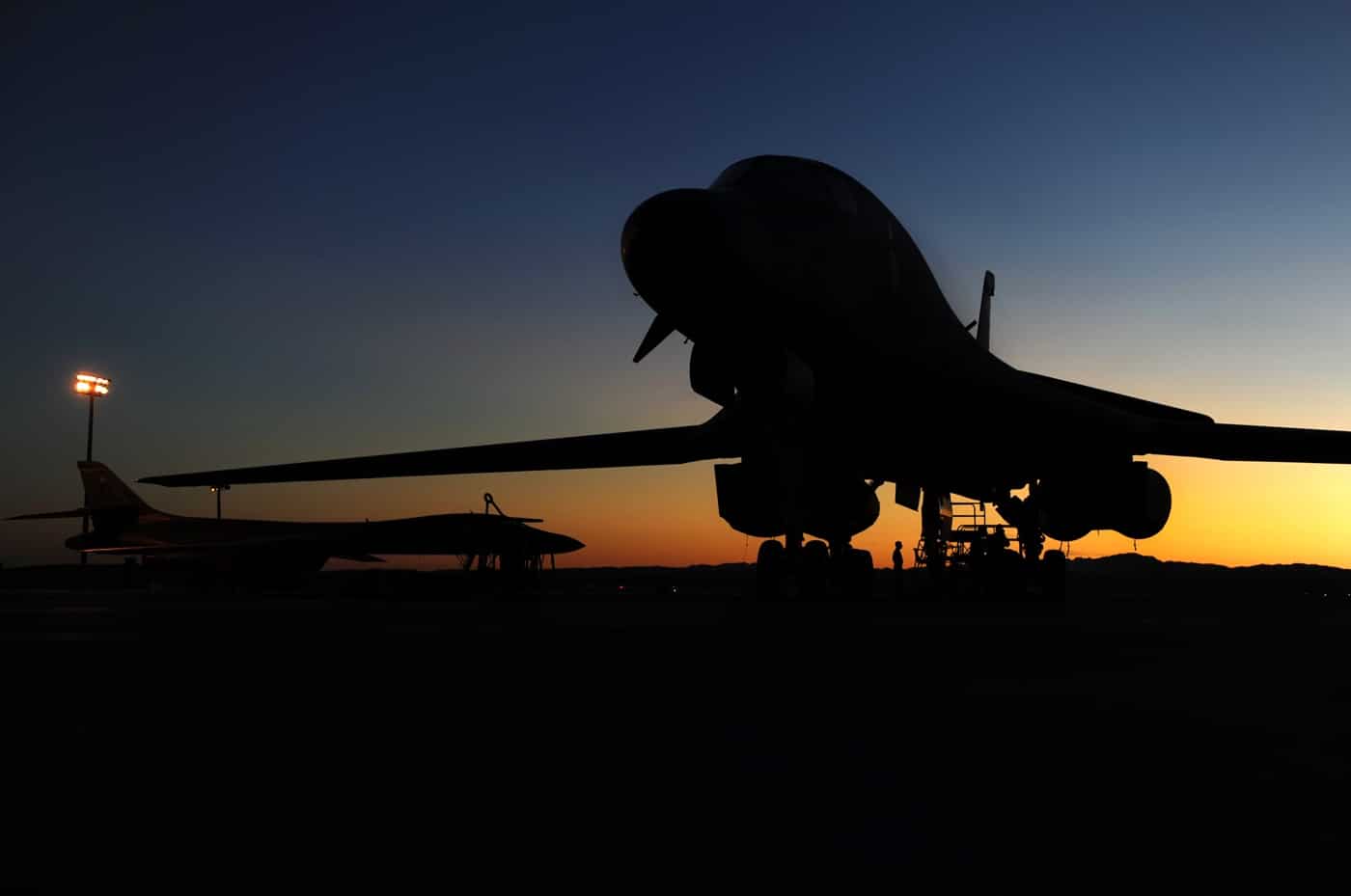
A B-1B Lancer sits on the flight line while receiving a post-flight inspection at Ellsworth Air Force Base in South Dakota. Image: Airman First Class Joshua Seybert/U.S. Air Force
Ruminations
I have a buddy who flew B-1Bs operationally.
When I asked him to describe the experience, he used the term raw power.
Of the original 100 operational B-1B bombers, seven were lost to accidents.
Since then, seven of those retired planes have been pulled out, dusted off, and reactivated.
The current operational fleet consists of 67 aircraft.
Current USAF plans are to keep the old Bone going through 2038.
The B-1B currently costs $63,000 per flight hour to operate.
Compare that with $72,000 for the B-52 and $135,000 for the B-2 Spirit.
The Bone represents the creative program of some fairly antiquated tactical dogma.
What began as a strategic nuclear bomber eventually evolved into a beloved close air support aircraft.
Despite the B-1Bs size and expense, it has been a serious combat multiplier on the battlefield.
Thats the reason Uncle Sam invests in these breathtakingly expensive machines in the first place.




